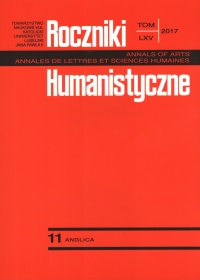Applying Transactional Analysis to Facilitate Self-Regulation of Trainee Translators and Interpreters
Abstract
This article rests on the assumption that self-regulation of trainee translators/interpreters can be significantly enhanced by moderating classroom communication practices. This concerns, in particular, the communication exchange relating to assessment. It is argued that assessment-related communication activates complex psychological mechanisms, which can either empower or disempower self-regulation. To illustrate such mechanisms, the author briefly discusses the theory of Transactional Analysis. It is a conceptual framework proposed originally by Eric Berne to explain the intricacies of how people communicate to attain their psychological goals. Berne’s observations are adapted to the micro-cosmos of the translation/interpreting classroom in order offer its participants tools of regulating their communicative interactions. The article ends with a handful of recommended activities intended to inspire the readers to research further and train the skills discussed in the article.
References
Berne, Eric. 1961. Transactional Analysis in Psychotherapy: A Systematic Individual and Social Psychiatry. New York: Grove Press.
Berne, Eric. 1964. Games People Play: The Psychology of Human Relationships. New York: Grove Press.
Fisher, Roger, William Ury. [1981] 1991. Getting to Yes: Negotiating Agreement without Giving in. New York: Penguin [originally published by Houghton Mifflin].
Grow, Gerald O. 1991. “Teaching Learners to Be Self-Directed.” Adult Education Quarterly 41 (3) , pp. 125–49.
Harris, Thomas A. 1967. I am OK, You’re OK. New York: Harper and Row.
Hase, Stewart, Chris Kenyon. 2000. “From Andragogy to Heutagogy.” Pandora. Australia’s WEB Archive. Last consulted 28.10.2016. http://pandora.nla.gov.au/nph-wb/20010220130000/ http://ultibase.rmit.edu.au/Articles/dec00/hase2.htm.
Hase, Stewart, Chris Kenyon. 2007. “Heutagogy: A Child of Complexity Theory.” Complicity: An International Journal of Complexity and Education 4(1), pp. 111–18.
Moser-Mercer, Barbara. 2008. “Skill Acquisition in Interpreting. A Human Performance Perspective.” The Interpreter and Translator Trainer 2 (1), pp. 1–28.
Kiraly, Donald C. 2015. “Occasioning Translator Competence: Moving beyond Social Constructivism towards a Postmodern Alternative to Instructionism.” Translation and Interpreting Studies 10.1 (Special Issue), pp. 8–32.
Kiraly, Don. 2016. “Authentic Project Work and Pedagogical Epistemologies: A Question of Competing or Complementary Worldviews?” In Kiraly, Don, Lisa Rüth, Carmen Canfora, Sascha Hofmann, Maren Dingfelder-Stone, Catherine Dingfelder-Stone, Raquel Pacheco, Susanne Hagemann, and Andrea Cnyrim. Towards Authentic Experiential Learning in Translator Education. Mainz: Mainz University Press, pp. 53–66.
Klimkowski, Konrad. 2015. Towards a Shared Curriculum in Translator and Interpreter Education. Wrocław: Wydawnictwo Wyższej Szkoły Filologicznej we Wrocławiu.
Knowles, Malcolm, Elwood F. Holton III, and Richard A. Swanson. [1973] 2005. The Adult Learner: The Definitive Classic in Adult Education and Human Resource Development. New York: Elsevier [originally published as Malcolm Knowles. The Adult Learner: A Neglected Species. Houston: Gulf].
Kolb, David A. 1984. Experiential Learning: Experience as the Source of Learning and Development. Vol. 1. Englewood Cliffs, NJ: Prentice-Hall.
Pankowska, Dorota. 2010. Nauczyciel w perspektywie analizy transakcyjnej. Lublin: Wydawnictwo UMCS.
Rogoll, Rüdiger. [1979] 1989. Nimm dich, wie du bist. Berlin: Herder. [Polish translation of 1989 by Antoni Tomkiewicz: Aby być sobą. Wprowadzenie do analizy transakcyjnej. PWN: Warszawa.]
Rotter, Julian B. 1966. “Generalized Expectancies for Internal versus External Control of Reinforcement.” In Psychological Monographs: General & Applied 80 (1), pp. 1–28.
Stewart, Ian, and Vann Joines. 1987. TA Today. A New Introduction to Transactional Analysis. Nottingham: Lifespace Publishing.
Copyright (c) 2017 Roczniki Humanistyczne

This work is licensed under a Creative Commons Attribution-NonCommercial-NoDerivatives 4.0 International License.





